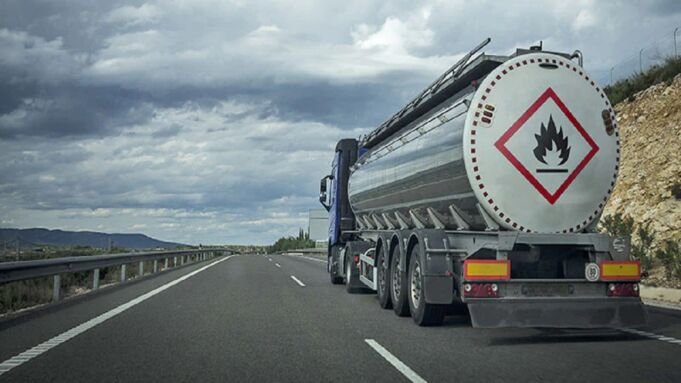Transporting harmful items is an important element of many businesses, from manufacturing to healthcare. While it is critical to providing important supplies, it also presents considerable problems and risks. This post will look at the most important components of dangerous goods transport, providing significant insights for enterprises and individuals.
What is Dangerous Goods?
Dangerous goods are materials and chemicals that can endanger one’s health, safety, property, or the environment. Examples include chemicals, explosives, flammable liquids, gasses, and contagious substances. Proper handling and transporting of these items are critical for avoiding accidents and minimizing potential injury.
Here’s a more detailed list of what is considered dangerous goods. Typically, they are classified into nine categories:
- Corrosive substances (hydrochloric acid)
- Explosives (fireworks or ammunition)
- Flammable liquids (petrol or acetone)
- Gases (flammable gases, such as LPG and aerosols), non-flammable gases (helium or nitrogen), and toxic gases (nitric acid or ammonia)
- Flammable solids and substances (include spontaneously combustible substances such as carbon or calcium dithionite and calcium carbide, which is dangerous when wet)
- Oxidizing substances and organic peroxides (swimming pool chlorine or benzoyl peroxide)
- Toxic and infectious substances (cyanides or pesticides)
- Mixed-class goods or those labeled in more than one class
- Other substances, such as dry ice, bitumen, and other elevated-temperature liquids
Regulatory Compliance
Compliance with regulatory standards is one of the most important factors in transporting dangerous goods. Several international and national regulations govern the transportation of hazardous materials. Specific packaging, labeling, and documentation requirements are outlined in these rules to ensure the safe transit of dangerous commodities.
Businesses that carry dangerous goods must be aware of and adhere to requirements. These include the Hazardous Materials requirements (HMR) in the United States and the European Agreement for the International Carriage of Dangerous Goods by Road (ADR) in Europe.
Failure to comply with these requirements can result in serious penalties and jeopardize public safety.
Packaging and Labeling
When transporting dangerous materials, proper packaging is critical. The packaging must be strong enough to resist transportation stresses while preventing leakage or spilling. In addition, labeling is critical in providing important information about the contents of the package.
Each package must bear standardized labels and markings describing the hazardous products’ nature, potential dangers, and emergency response information. This process guarantees that all shipping processes are informed of the contents and can react accordingly in an emergency.
Transportation Modes
Dangerous commodities can be carried in various ways, including via road, train, air, and sea. Each method has its own set of difficulties and regulations.
For example, transporting hazardous commodities by air requires adherence to International Air Transport Association (IATA) laws, whereas marine transport adheres to the International Maritime Dangerous Goods (IMDG) Code.
Understanding the individual requirements for each mode of transportation is critical for organizations involved in transporting dangerous commodities. It aids in selecting proper packing, labeling, and transportation methods to ensure the safety of the cargo and those participating in the transport process.
Emergency Response Planning
Despite extensive safety procedures, accidents can sometimes happen while transporting dangerous products. As a result, having a detailed emergency response strategy is essential. This strategy should include procedures for dealing with spills, leaks, fires, and other potential incidents.
Training staff on emergency response techniques in the transportation process is also critical. In an unforeseen catastrophe, this guarantees a quick and coordinated response, limiting the possible harm to humans and the environment.
Requirements For Transporting Dangerous Goods
Now that you have enough information about dangerous goods and their different components, here’s a proper way you can transport them following the required regulations:
Sort the Goods Correctly
Incompatible classes of harmful things should not be touched since they could explode or release toxic gases. Many items must be housed in distinct containers, and some chemicals or dangerous materials must be transported in separate trucks. Transport Segregation Devices are effective for separating risky products while they are being transported.
Keep in Mind the Storage Temperatures
Some products, such as peroxides, must be maintained below a particular temperature to avoid reactions. For this reason, you should always be aware of the temperatures at which your materials must be stored and adjust the conditions of your shipment accordingly.
Understand Your Flash Points
Similarly, flammable objects must be stored below their flash points to avoid explosions and fires. A flash point is the lowest temperature at which flammable liquid vapors will ignite.
Varied liquids have varied flash points, with some having flash points that are less than 0 degrees Celsius. Before shipping dangerous items, ensure every crew member knows the flashpoints.
Have the Proper Transportation Documentation
Regarding the transportation of dangerous commodities, regulators might request paperwork anytime. It is vital to have transport documentation available that provides all necessary information about the goods being transported in the vehicle.
Transport paperwork must include the consignor’s name and phone number and a description of the dangerous items, which must adhere to strict requirements. These differ by state; therefore, contact your local competent authorities for the most up-to-date information.
Remember that some states have no-go transport zones where dangerous commodities cannot be moved, so consider this when designing your transportation routes.
Correct Product Labeling
Most Australian states require all hazardous compounds to be labeled by the Globally Harmonised System (GHS) regulations specified by the UN. These include primary and secondary transportation containers; thus, all storage units must match the GHS label requirements.
Offload with Caution
When discharging risky products, strictly adhere to safety regulations. Clear any obstructions and keep traffic (human and vehicle) minimal. Check that suitable stair safety devices, such as concrete stair treads, are fitted if you haul dangerous goods up or down stairs.
Navigate the Terrain of Dangerous Goods Transport
Transporting dangerous products is a complicated and highly regulated endeavor. Businesses and individuals participating in this process must emphasize safety by adhering to strict rules, using proper packaging and labeling standards, and implementing comprehensive emergency response plans.
Navigating the terrain of dangerous goods transportation necessitates a commitment to ongoing education and adaptation to changing rules. You can balance the efficient movement of important goods and the safety of our communities by remaining educated and applying best practices.
A firm commitment to safety is non-negotiable in a world where the demand for hazardous material transportation is increasing.















